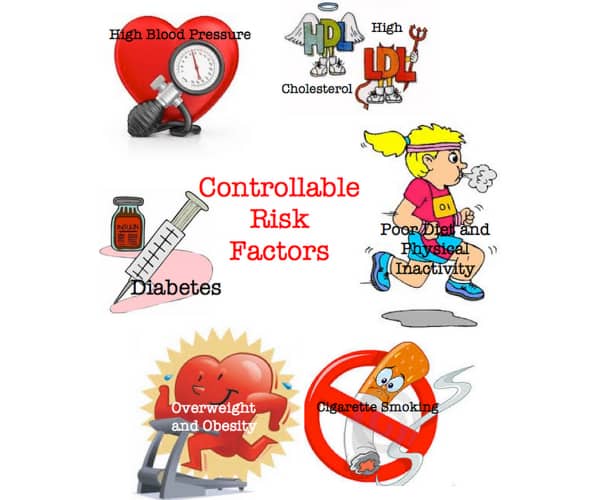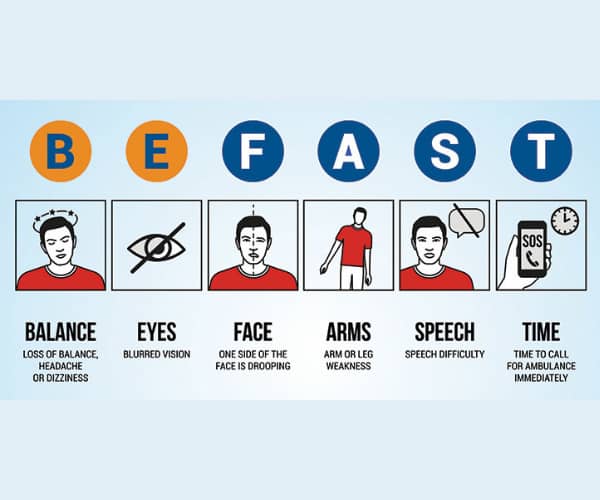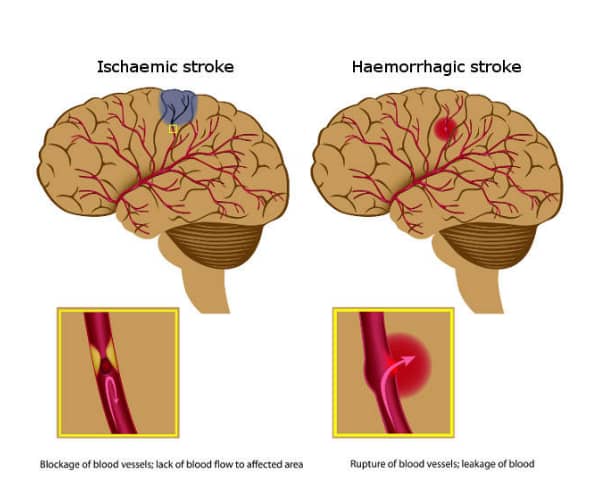
Mar 02 2022.
views 399



Life is full of uncertainties. However, one certainty established by global data is 1/6 human beings will get a stroke in their lifetime. If we take adults over the age of 25 years, the same data reveals one in four of us will certainly get it. Almost 14 million people get strokes each year and nearly 5.5 million of them would die. Hence it is time to reflect on how we can minimise this risk and how to get better soon if we are unlucky to face it.
The world Stroke Organization globally and the National Stroke Association of Sri Lanka (NSASL) in Sri Lanka are working hard to build awareness regarding the above facts and to support professionals, carers and stroke survivors and advocates to promote acute stroke care. The last Saturday of every February is our National Stroke Day and we had impactful stroke walks organised in various parts of our country until 2020. The last two years Covid pandemic has prevented this endeavour, yet this article is an attempt to do the same via print media.
Q What is Stroke?
Having a sudden onset disability due to damage to a part of the brain due to disruption of its blood supply is a Stroke. Usually, this is due to blockage of a blood vessel which takes blood to the brain and the part of the brain rapidly dies (infarcts) due to lack of blood supply. However, a small proportion (15%) of strokes are due to bleeding into the brain due to rupture of blood vessel/s.
Q Is stroke an Emergency?
Acute stroke or stroke that happens anew is an emergency, not less important than a heart attack or a head injury. The type of stroke that happens due to lack of blood supply can be rapidly treated and even cured if the blood supply to the brain is restored by emergent/urgent treatment options as soon as possible.
This facility is now available in almost all govt hospitals that have Computed Tomography (CT) scan facilities. Many centres which have Neurology services are doing this routinely and an interactive map is available on the asn.lk website where you can track the hospitals which provide this service.
For specialised Doctors to reverse this blood supply to the brain they would give a special medication by intravenous injection to suitable/selected patients, however, this can only be done within the first 4.5 hours from the start of your symptoms. Hence it is our duty to reach the hospital without losing any time to give ample time for the emergency services to do scans, get the story of the problem, discuss, and give the treatment.
The Colombo National Hospital of Sri Lanka is even further equipped to do interventional treatment where a radiologically guided catheter can try to retrieve the clot and restore the circulation, but this again has to be done usually within the first twelve hours and appropriate patients need to be selected carefully by experienced doctors.
Not everyone will be eligible for the above treatment options, yet all can be offered various other urgent and early medications to minimise harm and to prevent another stroke from happening. Even people who have a haemorrhagic (bleeding type) stroke may need early assessment to minimise bleeding, and if necessary urgent surgical and medical treatments.
Q How to Recognise a Stroke?
This is easy. Remember the mnemonic FAST or BE FAST.
IF any of these occur suddenly (not preexisting) then you should reach the hospital before
The B and E respectively stand for balance and eyesight change, even these two symptoms if occurs for the first time and suddenly it is worth going to the hospital immediately to check whether it could be due to stroke and get treated.
As in the developed world, we also have the 1990 ambulance service in many parts of our country and anyone who recognises the above symptoms should waste no time in calling the service or reaching the hospital by any other means.
Q Can Strokes occur again?
Every stroke has a reason why it occurred. The main part of the Doctor’s work is to find these causes and give treatment or advice to prevent them from causing the stroke again. Unless we do this, we are at risk of having another stroke.
Q What are TIAs (Transient Ischaemic Attacks)?
If the above-mentioned symptoms occur but get better soon (within minutes up to a day) they are called Transient Ischaemic Attacks (TIAs). This means that though, there was a block in a blood vessel to the brain it got opened or unblocked naturally and the relevant brain part did not die.
Q Is TIA an emergency?
TIAs are also an emergency or at least an urgency as though the harm is not done yet, unless the cause for the TIA is found and rectified it can soon recur. Hence all who had only a TIA and not a stroke also should seek medical attention to get appropriate medication and urgent tests to prevent the second or major attack.
Q How can we prevent Strokes?
Primary Prevention. All who had never had any stroke also have a responsibility to live healthy to prevent a stroke from occurring in us ever. This is called Primary Prevention. To do so we should know the major risk factors for Stroke and avoid them.
Secondary Prevention. This is relevant to all who had at least one stroke or a TIA. They need to prevent the same risk factors alluded to above. But they may need to take some additional medications as prescribed by doctors (like blood thinners, lipid-lowering medications) and these must be taken long term but with medical guidance. There are some surgical options also to prevent strokes recurring like surgery to restore blood flow to the obstructed neck vessels in selected patients.
Stroke Risk Factors
There are non-modifiable (unchangeable) risk factors like our age, ethnicity etc. However, let us concentrate on major modifiable (changeable) stroke risk factors
Other Modifiable Stroke Risk Factors
There are numerous other ‘risk factors’ some more common than others which too can be modified to minimise stroke risk. Let’s list a salient few of these below.
Healthy Behaviours to Prevent Strokes
If we understand the above risk factors that can be changed or modified, we can easily identify healthy behaviours to prevent future strokes. Let me tabulate them below:
Q What are the late effects of Stroke?
Stroke if not fully cured or resulted in death can lead to a varied range of disabilities.
To name a few, hemiparesis (paralysis of one side of the body), hemi numbness, difficulty in walking due to weakness or imbalance (ataxia), visual, speech, memory, urinary and even psychological and psychiatric problems. Also, in severe stroke, if the person is in a wheelchair or bed-bound there could be secondary problems like bed sore, urinary infections etc.
Post Stroke Care is a Multidisciplinary Task
Considering the above after-effects, we can appreciate that a multitude of health care professionals and workers would be needed for holistic post-stroke care. There are rehabilitation hospitals that cater for this need in some places. However, in many places, home care or other intermediate centres are helping but we need to identify the relevant health care providers appropriate for patients’ unique needs. Some of the team members are enumerated below.
Neurologists, Physicians, Medical Officers in Charge, Nursing Officers, Physiotherapists, Occupational Therapists, Speech Therapists, Social Workers. Other Specialist services like Psychiatry, Psychology, Surgery, Neurosurgery. There are stroke support groups also in many places now giving moral support and advocacy to post-stroke survivors and their carers.
Take Home Messages
1. Stroke can Kill or Disable you
2. Acute Stroke and TIAs are emergencies
3. Acute Stroke can be stopped or cured if acted very early. In many, the harms can be markedly minimised
4. Stroke is both Preventable and Treatable.
5. Healthy life and when needed, regular medications can keep strokes at bay.
0 Comments